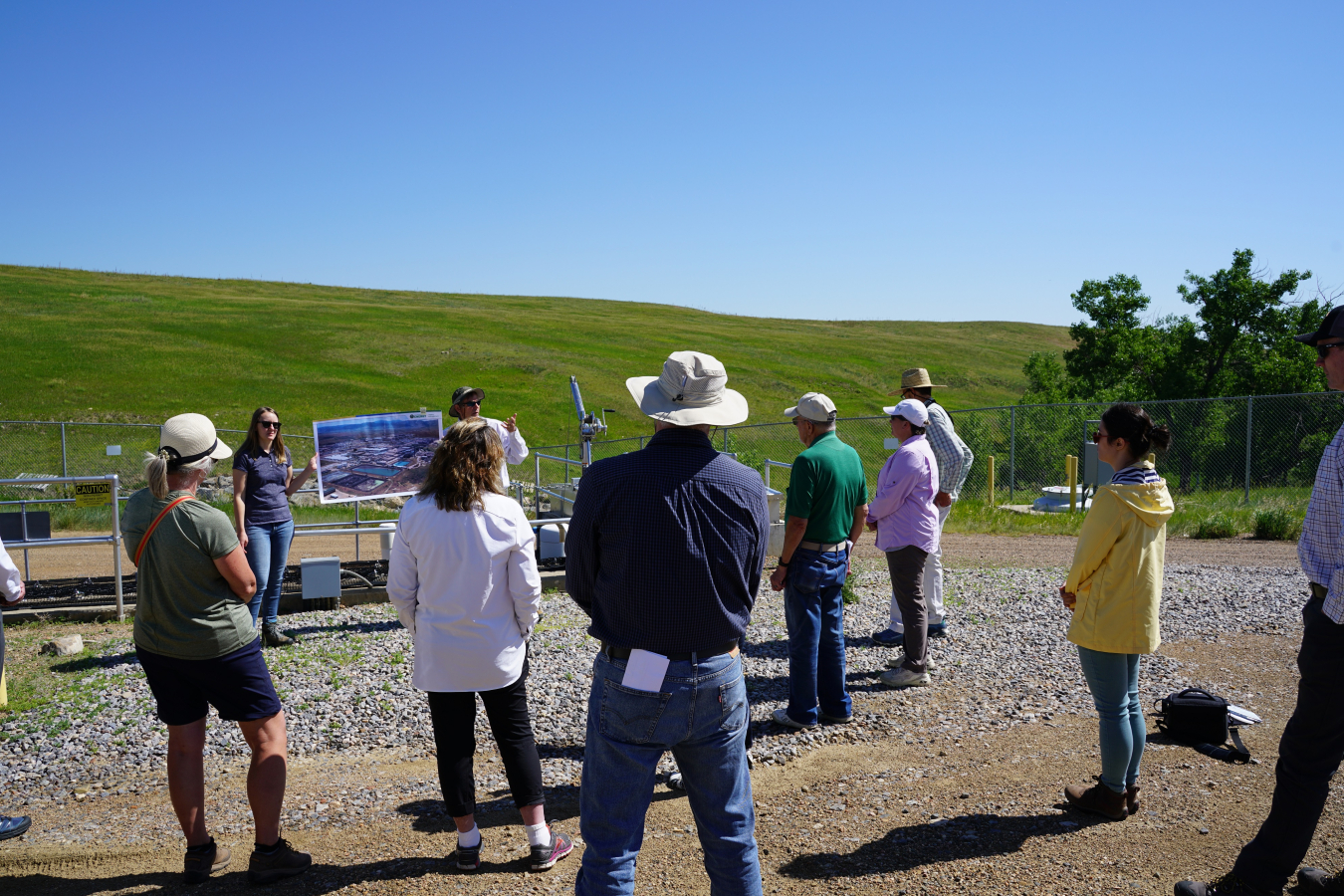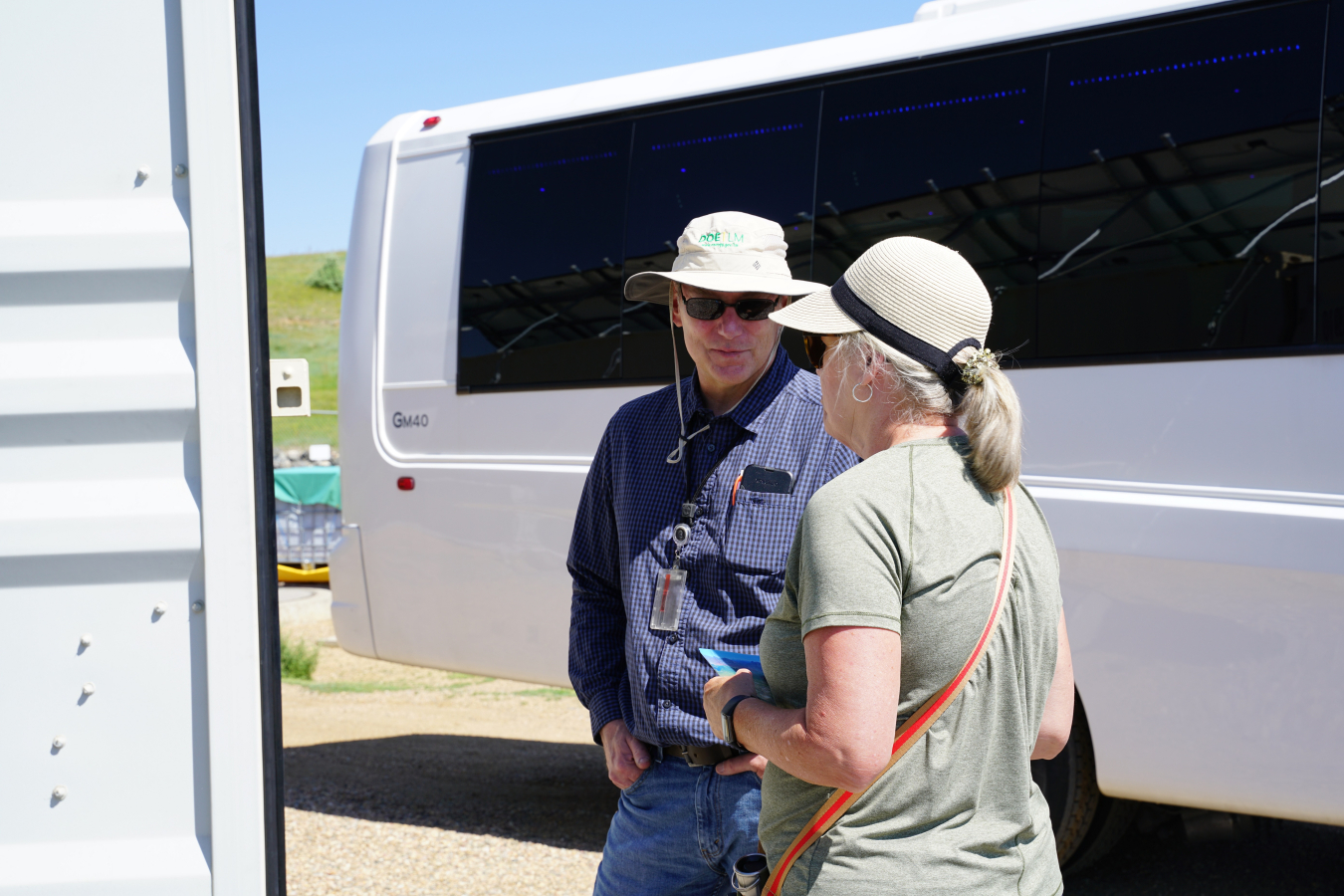Stewardship council sees site’s long-term surveillance and maintenance activities firsthand
July 11, 2024
The Rocky Flats Stewardship Council (RFSC) recently toured the Rocky Flats Site, Colorado, to learn more about the site and its management by the U.S. Department of Energy Office of Legacy Management (LM). The tour gave stakeholders an understanding of the site and provided insights for future discussions.
RFSC is a local stakeholder organization created in 2006 as a result of the 2005 National Defense Authorization Act. The purpose of the stewardship council is to engage with the community about Rocky Flats and inform the public about site activities.
LM regularly presents Rocky Flats Site data and information to RFSC, and tour participants visited various site locations discussed in those reports and presentations.
LM Site Manager Andy Keim kicked off the tour, welcoming the group at the former Rocky Flats Plant West Gate. LM Support Partner Senior Hydrogeologist John Boylan gave a site overview, talked about LM’s long-term surveillance and maintenance activities, and pointed out a sign with the institutional controls that outline the limits on site activities.
While driving to the Solar Ponds Plume Treatment System, known as SPPTS, which is on the site’s main gravel road, Boylan showed a large photo of the road from when it was called Central Avenue. At that time, it was a heavily developed area of the former Rocky Flats Plant. He mentioned how the site’s post-closure topography was designed for precipitation runoff. Boylan also pointed out the former fire department location and fire training area that is currently monitored for per- and polyfluoroalkyl substances, which supports a Comprehensive Environmental Response, Compensation, and Liability Act Five-Year Review addendum.

Tour members also saw the North Walnut Creek Slump, where piezometers and other tools collect data to monitor the slump. Piezometers are installed to measure the depth of the groundwater.
While at the SPPTS, the council saw the solar-powered nitrate treatment component where water and nutrients are pumped into a large concrete enclosure and bacteria treat the nitrate. The group learned that although this component removes some uranium, a new uranium treatment component is being designed.
During the tour group’s third stop, they saw the East Trenches Plume Treatment System, or ETPTS, South Walnut Creek, the Mound Site Plume Collection System, known as MSPCS, monitoring location GS10, and the wetlands. The ETPTS is an award-winning, solar-powered air stripper that treats contaminated groundwater from the MSPCS and ETPTS. GS10 is a Point of Evaluation station that continuously monitors surface water. Point of Evaluation locations monitor water upstream of Points of Compliance, which is where surface water is monitored again before leaving the site. This allows LM to evaluate water quality closer to where the industrial facilities were once located.
At the final tour stop, with Standley Lake and downtown Denver in the distance, Boylan described how water from Woman Creek and the South Interceptor Ditch flows to the Woman Creek Point of Compliance, known as WOMPOC, before it leaves the site. He explained that Point of Evaluation SW027, which is upstream of WOMPOC, monitors surface water, including runoff from the former 903 Pad, which was the largest area of plutonium contamination at the site before cleanup.
Because there are still low levels of plutonium in some of the soil, and the site's benchmark for plutonium in surface water is low, samples from SW027 occasionally show plutonium levels above that benchmark. However, this condition was expected when the site was cleaned up. Importantly, plutonium and americium have not exceeded standards at WOMPOC.
“We appreciate the opportunity to show the Rocky Flats Site to members of the Rocky Flats Stewardship Council and share the unique aspects of the site while also addressing their questions,” said Keim.

